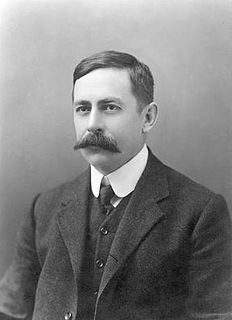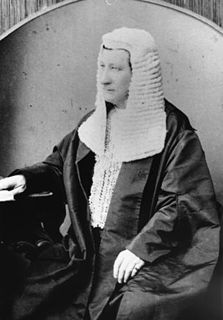
Toowoomba South State School is a heritage-listed former school at 158 James Street, South Toowoomba Toowoomba, Toowoomba Region, Queensland, Australia. It was designed by Department of Public Works (Queensland). It was added to the Queensland Heritage Register on 2 December 2013.

Oak Lodge and Spreydon is a heritage-listed pair of villas at 7 Warra Street & 30 Rome Street, Newtown, Toowoomba, Toowoomba Region, Queensland, Australia. They were designed by architectural firm James Marks and Son and was built from 1890s to c. 1923. They were added to the Queensland Heritage Register on 1 October 2003.

Baillie Henderson Hospital is a heritage-listed psychiatric hospital at 1 Hogg Street, Cranley, Toowoomba, Toowoomba Region, Queensland, Australia. It was built from 1888 to 1919. It is also known as Toowoomba Hospital for the Insane, Toowoomba Lunatic Asylum, and Toowoomba Mental Hospital. It was added to the Queensland Heritage Register on 27 September 1999.

Bishop's House is a heritage-listed villa at 73 Margaret Street, East Toowoomba, Toowoomba, Toowoomba Region, Queensland, Australia. It was designed by Henry Marks and built from 1910 to c. 1911 and from 1939 to c. 1940. It is also known as Dalmally and Kilallah. It was added to the Queensland Heritage Register on 21 October 1992.

Carlton House is a heritage-listed boarding house at 3 Mill Street, Toowoomba, Toowoomba Region, Queensland, Australia. It was built from c. 1875 to 1900s. It was added to the Queensland Heritage Register on 31 October 1994.

Clifford House is a heritage-listed club house at 120 Russell Street, Toowoomba, Toowoomba Region, Queensland, Australia. It was built c. 1865. It was added to the Queensland Heritage Register on 21 October 1992.

Gabbinbar is a heritage-listed villa at 344-376 Ramsay Street, Toowoomba, Toowoomba Region, Queensland, Australia. It was designed by architect Willoughby Powell for the Rev. Dr. William Lambie Nelson and built in 1876 by Richard Godsall. It was added to the Queensland Heritage Register on 21 October 1992.

Gladstone House and Cottage is a heritage-listed detached house at 1B-3 Gladstone Street, Newtown, Toowoomba, Toowoomba Region, Queensland, Australia. It was designed by Harry Marks for himself and built c. 1908. It is also known as St Rest. It was added to the Queensland Heritage Register on 13 January 1995.

Glen Alpine is a heritage-listed villa at 32-36 East Street, Redwood, Toowoomba, Toowoomba Region, Queensland, Australia. It was designed by Toowoomba architect Harry Marks and built c. 1918. It was added to the Queensland Heritage Register on 11 June 1993.

Kensington is a heritage-listed villa at 126 Russell Street, Toowoomba, Toowoomba Region, Queensland, Australia. It was designed by William Hodgen Junior and built in 1897. It was added to the Queensland Heritage Register on 28 July 2000.

Millbrook is a heritage-listed detached house at 9 Phillip Street, East Toowoomba, Toowoomba, Toowoomba Region, Queensland, Australia. It was built from 1860s to 1900s. It was added to the Queensland Heritage Register on 27 April 2001.

Rodway is a heritage-listed villa at 2 South Street, Rangeville, Toowoomba, Toowoomba Region, Queensland, Australia. The architect was Harry Marks. It was built from c. 1904 to 1930s. It is also known as Sylvia Park. It was added to the Queensland Heritage Register on 21 October 1992.
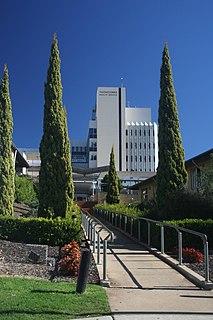
Toowoomba Hospital is a heritage-listed hospital at Pechey Street, Toowoomba, Toowoomba Region, Queensland, Australia. It was built from c. 1880 to c. 1927. It is also known as Toowoomba Base Hospital. It was added to the Queensland Heritage Register on 28 July 2000.

Tor is a heritage-listed villa at 396 Tor Street, Newtown, Toowoomba, Toowoomba Region, Queensland, Australia. It was designed by William Hodgen and built in 1904. It was added to the Queensland Heritage Register on 28 May 1999.
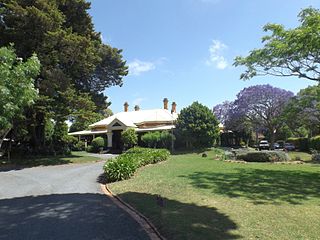
Vacy Hall is a heritage-listed villa at 135 Russell Street, Toowoomba, Toowoomba Region, Queensland, Australia. It was built c. 1899. It was added to the Queensland Heritage Register on 21 October 1992.

University of Queensland Gatton Campus is a heritage-listed university campus of the University of Queensland at Warrego Highway, Lawes, Gatton, Lockyer Valley Region, Queensland, Australia. It was built from 1897 to 1960s. It is also known as the Queensland Agricultural College, the Foundation Precinct Gatton College and Lawes Campus. It was added to the Queensland Heritage Register on 6 January 2004.
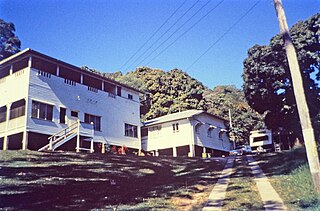
Halse Lodge is a heritage-listed boarding house at 17 Noosa Drive, Noosa Heads, Shire of Noosa, Queensland, Australia. It was built from 1880s to 1920s. It is also known as Bay View and Hillcrest Guest House. It was added to the Queensland Heritage Register on 30 April 1997.
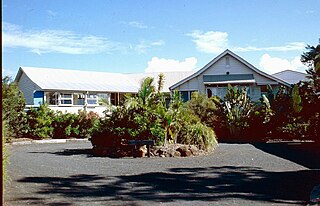
Kalkie State School is a heritage-listed state school at 257 Bargara Road, Kalkie, Bundaberg Region, Queensland, Australia. It was designed by the Queensland Department of Public Works and built in 1877 by Franz Kuhnel and William Starke. It was added to the Queensland Heritage Register on 21 October 1992.

Toowoomba North State School is a heritage-listed state school at 139 Mort Street, Toowoomba City, Toowoomba, Toowoomba Region, Queensland, Australia. It was built from 1938 to 1957. It was formerly known as Mort Estate National School. It was added to the Queensland Heritage Register on 6 May 2016.

Toowoomba East State School is a heritage-listed state school on the corner of Arthur and Mary Streets, East Toowoomba, Toowoomba Region, Queensland, Australia. It was built from 1935 to 1936 by the Queensland Department of Public Works. It was originally known as Queen's Park State School. It was added to the Queensland Heritage Register on 28 July 2017.






